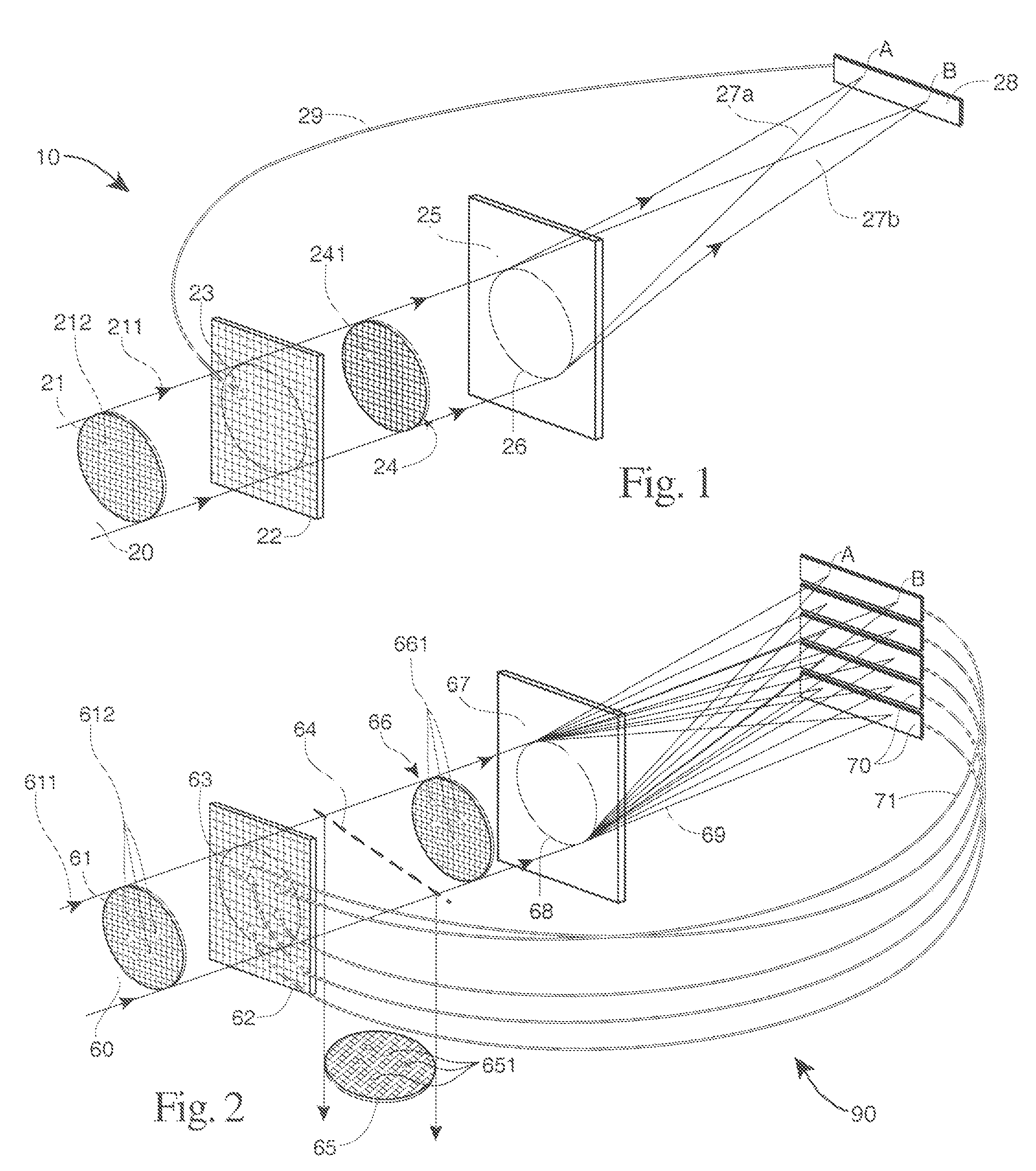Holographic adaptive optic system
a technology of adaptive optics and optics, applied in the field of adaptive optics systems, can solve the problems of limiting resolution, degrading image quality, blurring image,
- Summary
- Abstract
- Description
- Claims
- Application Information
AI Technical Summary
Benefits of technology
Problems solved by technology
Method used
Image
Examples
Embodiment Construction
[0010]The holographic adaptive optics system consists of three major parts, a holographic wavefront sensor, a detector to register the locations of reconstructed beams, and a device for producing phase corrections to a wavefront.
[0011]The first part of the adaptive optics system involves a holographic wavefront sensor (HWFS) described in patent application Ser. No. 11 / 138,727 titled “Holographic Wavefront Sensor” and incorporated herein by reference. This wavefront sensor analyzes an entire wavefront at once (a so-called modal detector) using a hologram. The wavefront sensor may consist of a diffractive optical element such as a multiplexed hologram which may be fabricated or programmed in advance with all aberrations to be corrected. In operation, a wavefront incident on the hologram is divided up into multiple output beams according to the presence and strength of particular aberrations present in the input.
[0012]The HWFS may operate at any wavelength in the electromagnetic spectr...
PUM
 Login to View More
Login to View More Abstract
Description
Claims
Application Information
 Login to View More
Login to View More - R&D
- Intellectual Property
- Life Sciences
- Materials
- Tech Scout
- Unparalleled Data Quality
- Higher Quality Content
- 60% Fewer Hallucinations
Browse by: Latest US Patents, China's latest patents, Technical Efficacy Thesaurus, Application Domain, Technology Topic, Popular Technical Reports.
© 2025 PatSnap. All rights reserved.Legal|Privacy policy|Modern Slavery Act Transparency Statement|Sitemap|About US| Contact US: help@patsnap.com



